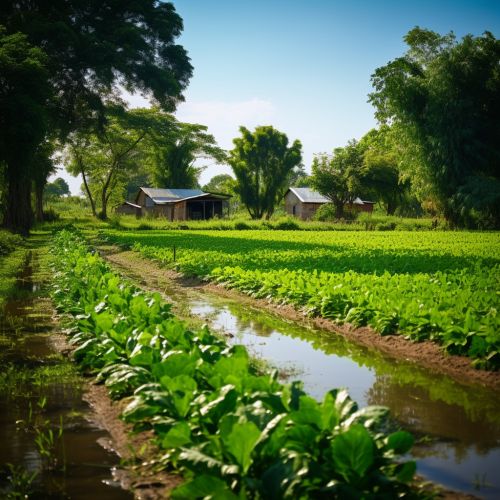Chinampa
Overview
The Chinampa is a traditional Mesoamerican agricultural system that has been used for centuries, primarily in the Basin of Mexico. It involves the creation of small, rectangular areas of fertile arable land on the shallow lake beds in the Valley of Mexico. The word "chinampa" comes from the Nahuatl word chināmitl, which means "reed basket for growing plants".


History
The chinampa system was developed by the indigenous peoples of Mesoamerica, primarily the Aztecs, who inhabited the region that is now modern-day Mexico. The system was in use by the 9th century AD, and it was one of the primary factors that allowed the Aztec civilization to flourish in an environment that was otherwise difficult for large-scale agriculture.
Construction
The construction of a chinampa begins with the building of a rectangular enclosure in the lake bed using stakes and woven reeds. The enclosure is then filled with mud, lake sediment, and decaying vegetation. This creates a fertile layer of soil that is ideal for growing crops. The chinampa is typically about 30 meters (98 feet) long by 2.5 meters (8.2 feet) wide.
Cultivation
Chinampas are highly productive agricultural areas. They can be cultivated year-round, and they are capable of producing up to seven crops per year. The primary crops grown on chinampas include maize, beans, squash, amaranth, tomatoes, chili peppers, and flowers. In addition to crops, chinampas also often include trees, which provide shade and help to stabilize the chinampa.
Ecological Significance
Chinampas are considered a form of sustainable agriculture. They create a rich habitat for a variety of plant and animal species, and they help to filter and purify water. The chinampa system also helps to mitigate the effects of climate change by sequestering carbon and reducing greenhouse gas emissions.
Current Status and Future Prospects
While the chinampa system was once widespread in the Basin of Mexico, it has declined significantly in recent years due to urbanization and changes in land use. However, there is a growing interest in reviving the chinampa system as a sustainable form of agriculture that can help to address food security and climate change challenges.
